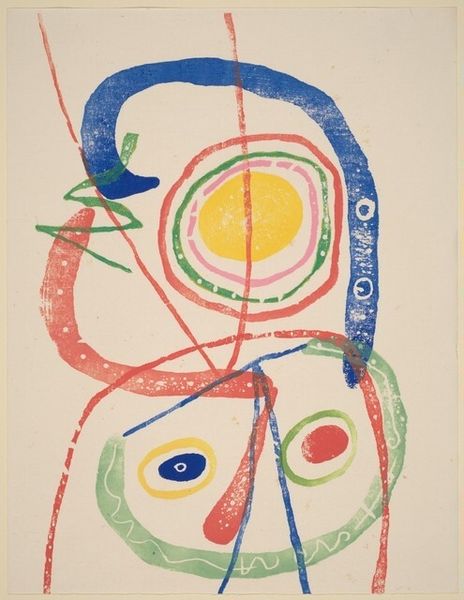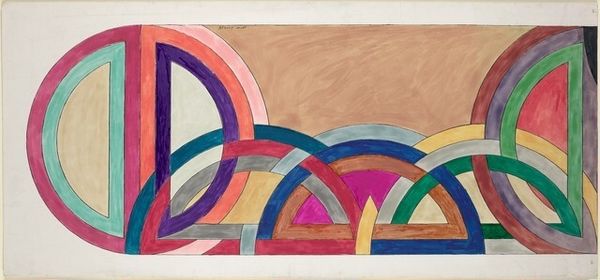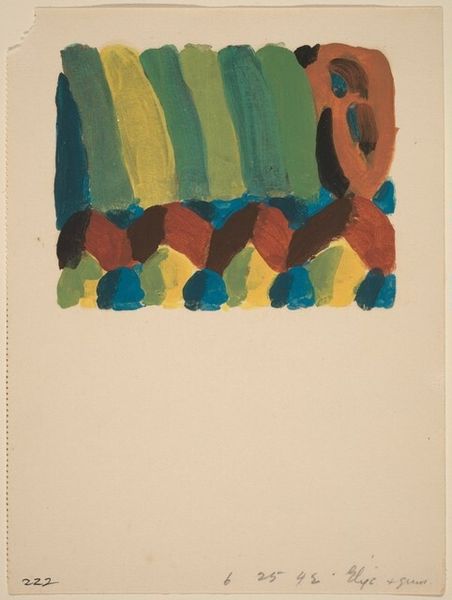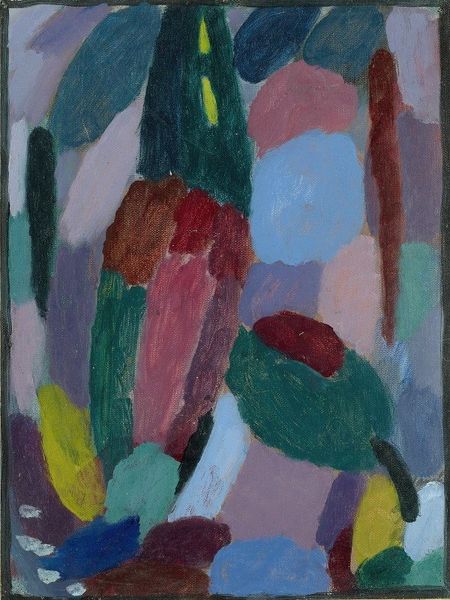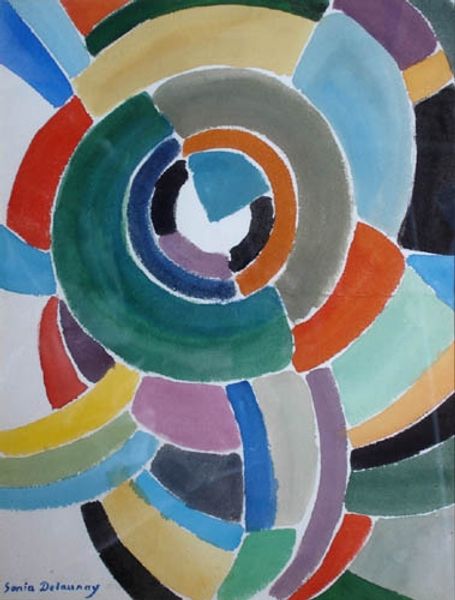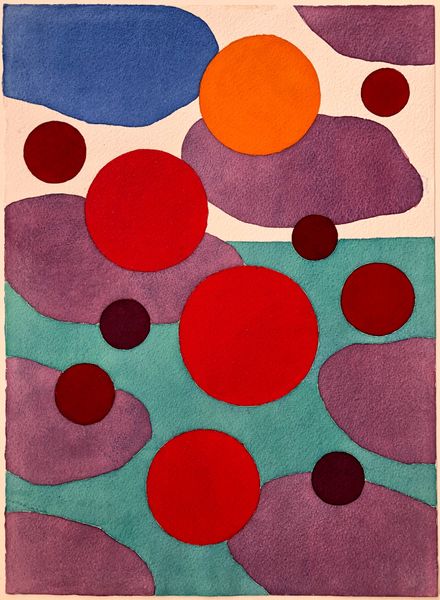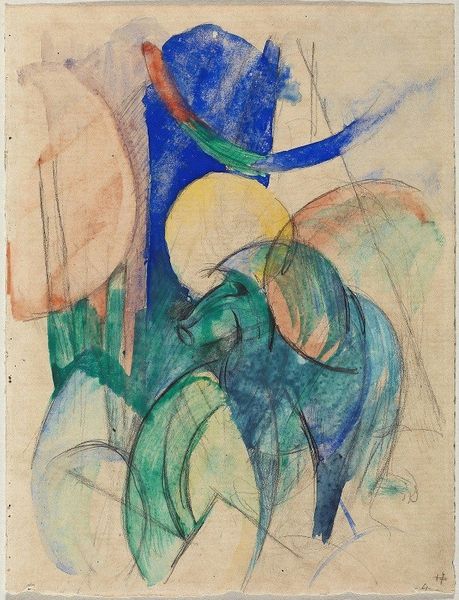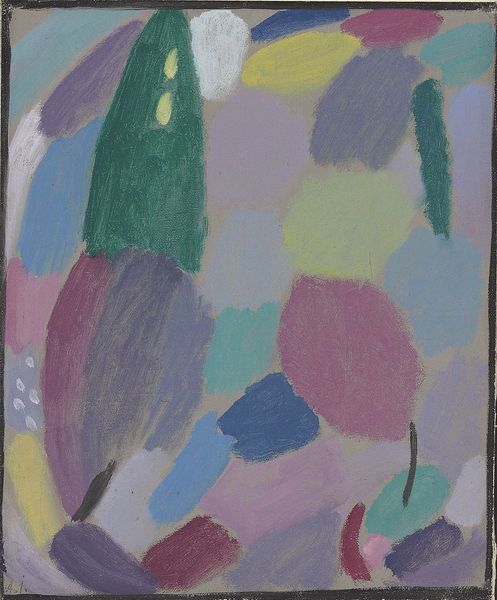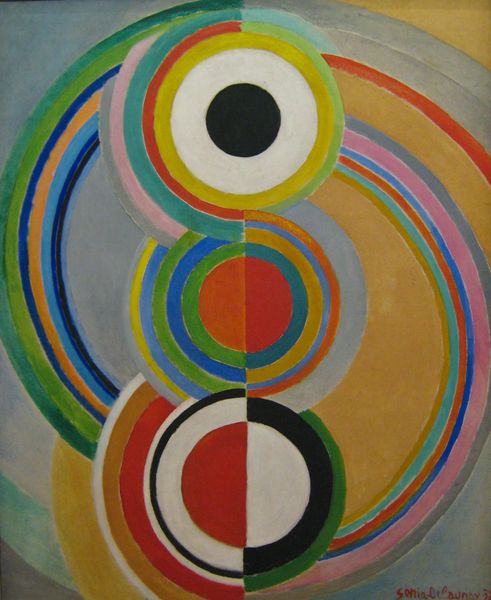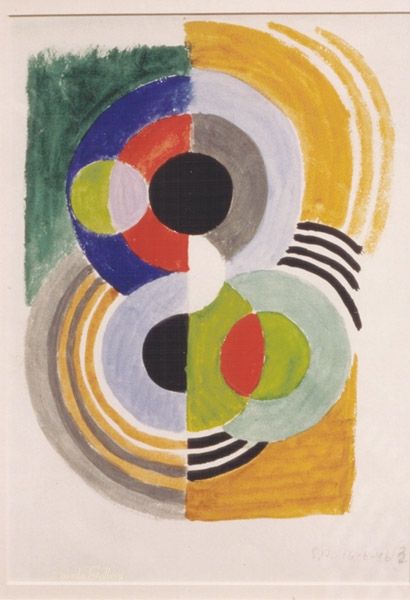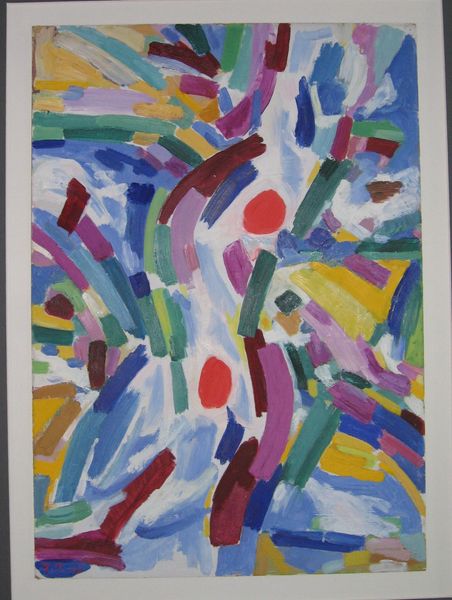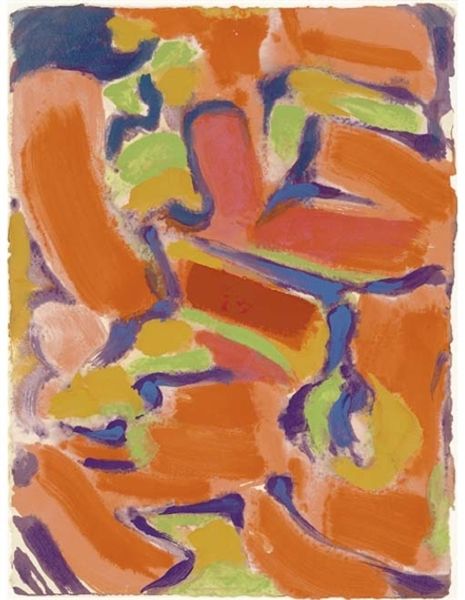
drawing, watercolor
#
drawing
#
water colours
#
watercolor
#
geometric
#
abstraction
#
line
#
orphism
#
watercolor
Dimensions: sheet: 36.8 x 26.6 cm (14 1/2 x 10 1/2 in.)
Copyright: National Gallery of Art: CC0 1.0
Curator: This watercolor piece, simply titled "Composition", was created by Robert Delaunay around 1930. Its pure abstraction makes me wonder what it's all about. Editor: It strikes me as optimistic, somehow. The overlaid circular forms in soft hues, predominantly watercolor, suggest an otherworldly feeling of interconnectedness, even harmony. Curator: Given Delaunay's involvement in Orphism, a movement deeply influenced by theories of color and light, these shapes might represent the energy of light itself. It could also be something as simple as light in motion. I can’t help thinking that materials also inform content here: a readily available, commercially-made watercolor offers widespread appeal, democratizing what it means to 'own' high art. Editor: The circles do invoke certain ideas; cycles, orbits perhaps...a constant cosmic dance? Delaunay often explored urban scenes and technology, filtering them through color and geometric forms, could this evoke an echo of celestial maps from a past time or culture? Curator: Interesting that you mention 'celestial maps'—his move away from recognizable subject matter freed his experimentation. How the pigment interacts with the paper, the viscosity, and the absorption...all impact how we perceive the ‘cycles’ and light itself. Mass production democratizes the sublime—the material itself influences consumption. Editor: I think your point about consumption speaks more broadly too: consider the historical period of intense change and trauma. The symbolic function could speak to collective anxieties, anxieties so great perhaps only abstraction can offer a refuge, if only temporary. The shapes repeat offering structure. Curator: Structure is, quite literally, laid down in these distinct line breaks of color—how accessible art, or distraction, might play a social function through inexpensive mediums. Editor: We are considering an optimistic symbol system—as a way to grapple with disruption; I see in the piece then not just beauty, but meaning constructed within historical uncertainty. Curator: Indeed. Examining both the artistic decisions made with watercolor and the context it offers perhaps lets us approach this visual language from both an aesthetic and an accessible one.
Comments
No comments
Be the first to comment and join the conversation on the ultimate creative platform.
